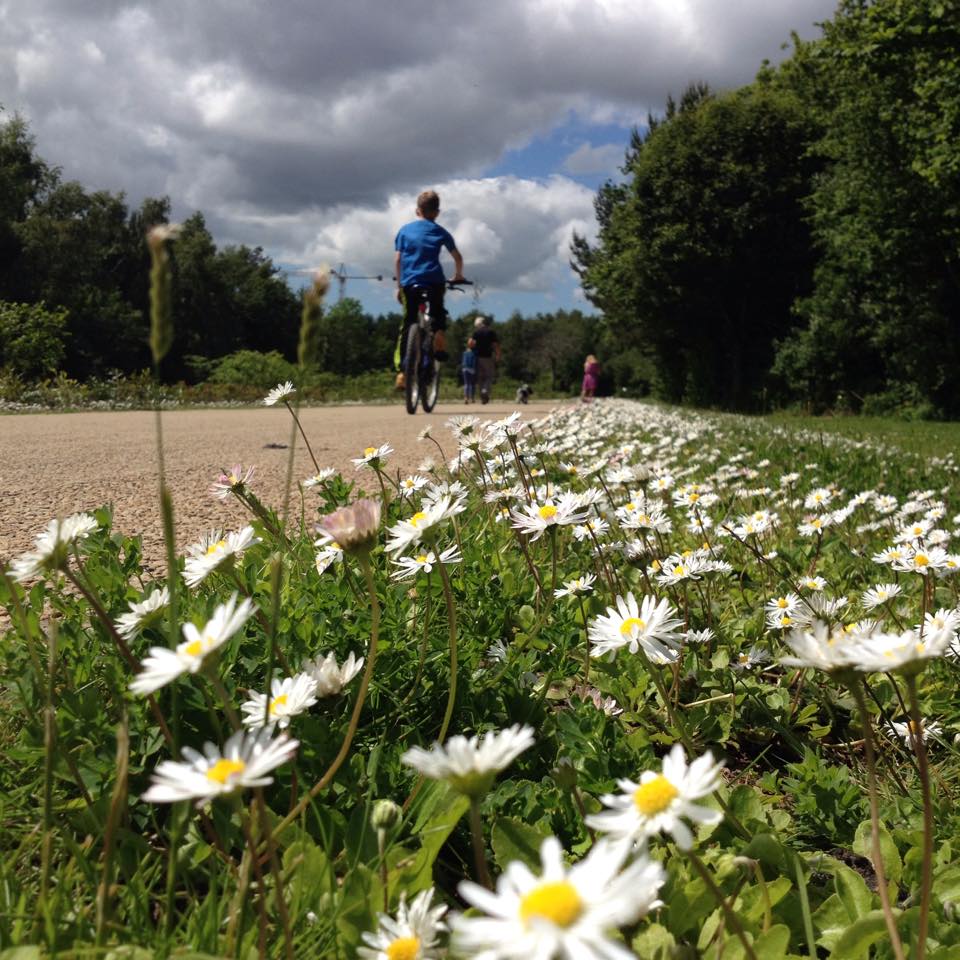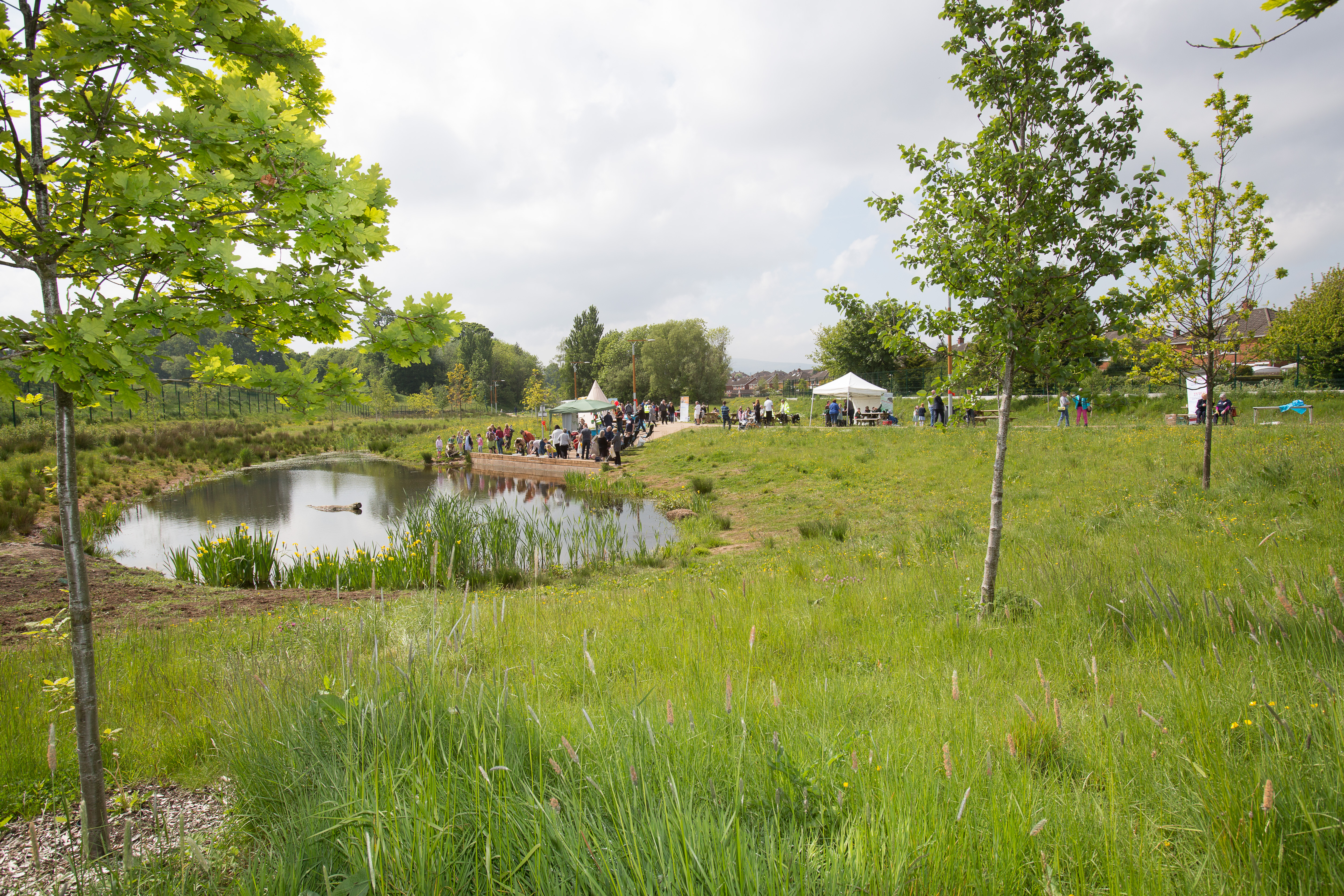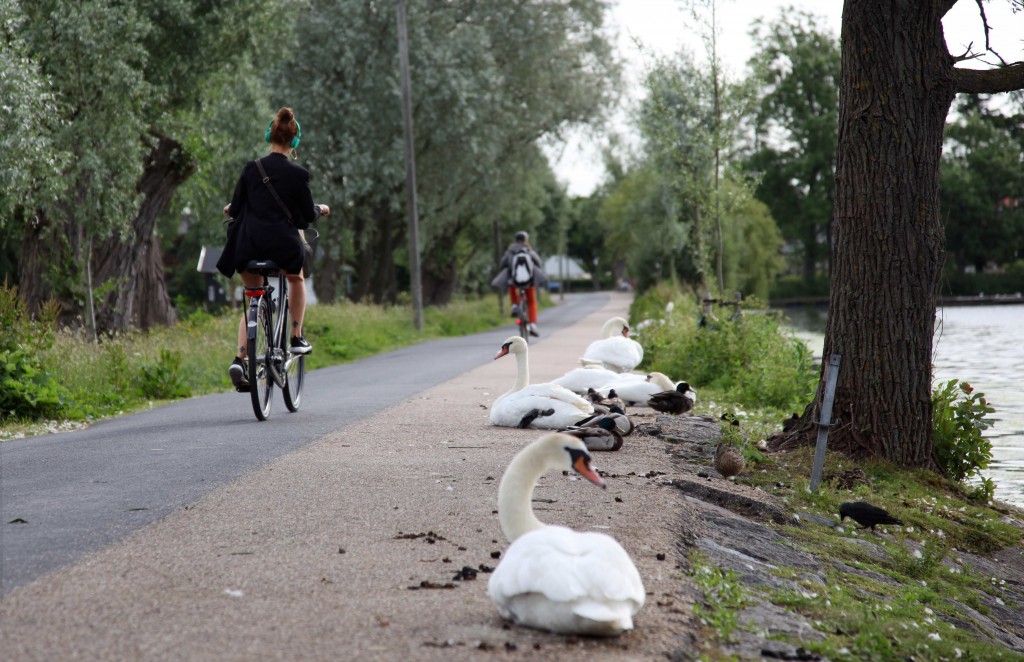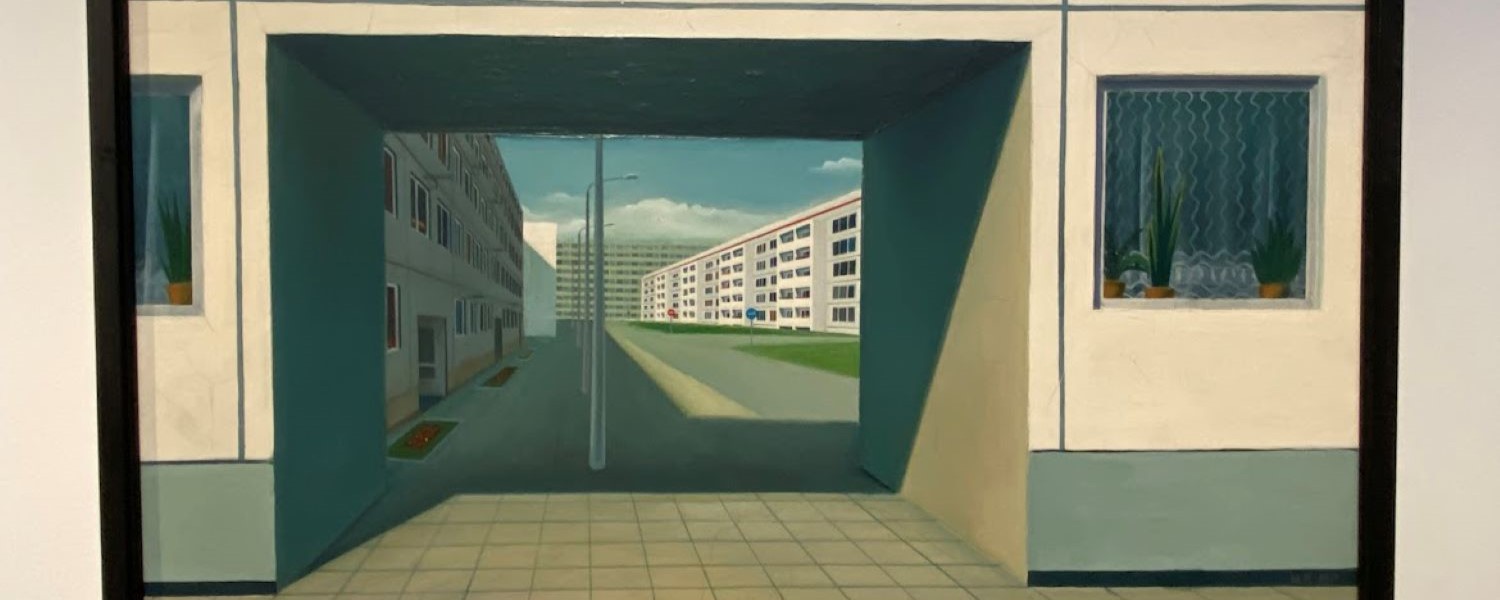
Victoria Park, Belfast. Image: Fiona Ann Paterson
The greatest change happening to the face of our planet is the rapid growth of urban areas. Every ten years, an area the size of Britain is colonised by urban development, and by 2050 two-thirds of the world’s population will be living in urban areas. This urban growth is already having a profound impact: while cities occupy 2% of the world’s surface, they consume 75% of the Earth’s natural resources and produce 75% of global CO2 emissions.
Last month’s Central Scotland Green Network (CSGN) forum in Edinburgh explored how green infrastructure projects can help cities and towns repair the damage of urbanisation, while making urban areas more healthy and prosperous places for the people who live there.
The importance of green infrastructure
Green infrastructure includes elements such as parks and gardens, woodland and wetlands, canals and cycle paths. It’s a natural life support system that can play a key role in helping urban areas adapt to and mitigate climate change.
Three projects showcased at the CSGN forum admirably demonstrated how green infrastructure can benefit the environment, the economy, large cities and local communities.
Milan: building forests in the sky
Francesca Cesa Bianci, senior architect at Stefano Boeri Architects in Milan described a ground-breaking project in her city, called Bosco Verticale – the Vertical Forest.
She explained that, while urban growth cannot be stopped, it is possible to build cities more in harmony with nature. The Vertical Forest project is a response to this challenge.
Almost 800 trees and 5000 shrubs have been planted on the balconies of two residential towers built on a brownfield site in central Milan. The result is visually striking, but even more outstanding is the greenery’s environmental impact. The two towers absorb 30 tons of CO2 per year and produce 19 tons of oxygen a day. Noise and heat are also reduced and the buildings now provide habitat for more than 20 species of birds.
The Bosco Verticale idea is now spreading beyond Italy, with similar projects in Albania, Switzerland and China. Some municipalities in China are also exploring the idea of entire cities composed of vertical forests – which could bring significant benefits to urban areas where air pollution is a hidden killer.
Belfast: telling a different story
East Belfast is an area of multiple deprivation, with some of the worst levels of physical and mental health in Europe, low educational attainment and a deprived physical environment. The 2014 edition of the Rough Guide to Ireland warned readers that it was “inadvisable” to visit the area.
That scenario is now changing, thanks largely to a green infrastructure project. Wendy Langham, Programme Manager for the EastSide Partnership, outlined to the CSGN forum how the Connswater Community Greenway (CCG) is changing lives and changing the way people think about the area.

Connswater Community Greenway Image: EastSide Partnership, Belfast
Funded by the Big Lottery Fund, Belfast City Council and the Northern Ireland Executive, two major phases of development have created a 9km linear park with 16km of walking and cycling routes, 30 new or improved bridges crossing over three rivers, and works to deliver elements of Belfast’s Flood Alleviation scheme and improve water quality.
An ongoing assessment of the project has estimated the potential economic return of the CCG to be up to 14 times the investment. The flood alleviation investment of £11.7m has saved an estimated £54.7m.
The study also highlighted the wider benefits of the project:
“We have shown that environmental interventions, such as the Connswater Community Greenway, could be a cost-effective way to increase physical activity levels, prevent major chronic diseases and decrease healthcare expenditure. In addition, the Greenway may have benefits beyond health such as reductions in traffic and carbon emissions, crime and improvements in safety.”
The project has been keen to tell a different story about East Belfast from the negative narrative so long associated with the area. Celebrating local heroes, the project has developed a public square named in honour of author C.S. Lewis, while a Van Morrison music trail has attracted locals and tourists to the area.
Wendy explained that the project is far from finished, and has ambitious plans for the future. She concluded with a quotation from Michelangelo that captures the spirit of the project:
“The greater danger for most of us lies not in setting our aim too high and falling short; but in setting our aim too low, and achieving our mark.”
Copenhagen: connecting people with nature
For many years, the Danish capital has been the envy of cyclists the world over. But now, the city’s well-developed network of on-road cycling routes is being supplemented by a new set of ‘green cycle routes’. Winding through parks, open spaces, woodlands and other habitats, the new paths will give cyclists and pedestrians safe and enjoyable access to nature.
Niels Jensen, traffic planner with the City of Copenhagen, explained that the first of these green cycle routes opened in 2012, and a further 23 routes are planned, covering an area of over 100km. One of the routes connects central Copenhagen with the suburban town of Albertslund, 22 km outside the city, while another follows the course of an abandoned railway line.

Albertslund Green Cycleway. Image: Soren Rud/LifeExhibitions. Further information – Copenhagen Green
Niels acknowledged that the investment in the project is significant – €20.7 million, But Copenhagen believes the benefits are worth the money,with more non-cyclists – including children – taking to bikes, using safe, direct and unpolluted connections. Since 2012, the first two routes have experienced a growth in the number of bicycle users of 61% and 34% respectively. The project expects to see a 25% increase in cycling traffic by 2025, advancing Copenhagen’s ambition to be the best cycling city in the world.
Conclusion
In her keynote speech to the CSGN forum, Scottish Government minister Roseanna Cunningham described the transformation achieved by green infrastructure as “magical”. She highlighted the examples of a project that will transform a landfill site in Glasgow into a community woodland, and another programme to improve mental health by bringing people into contact with woodlands and forests.
These projects, and those showcased during the CSGN forum demonstrate that our urbanising world need not be a concrete jungle, and that the benefits of green infrastructure go far beyond its face value.

Orangefield Park, Belfast Image: EastSide Partnership, Belfast
Further reading on green spaces in our blog
Share
Related Posts
Supporting residents on the decarbonisation journey: leveraging data for effective retrofit projects
As the drive towards decarbonisation intensifies, the social housing sector’s ability to collect, store and manage vast amounts of data becomes increasingly critical. With a shared goal of creating warmer, carbon-free homes, housing associations’ strategic use of data is essential ....
A recent item on BBC Radio 4’s Today programme generated an unusually high number of responses from listeners. A man who had lost his job in the financial services sector at the age of 57 described his difficulty in trying ....


